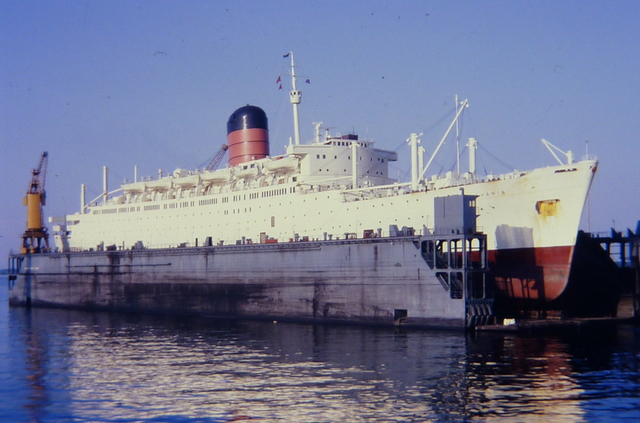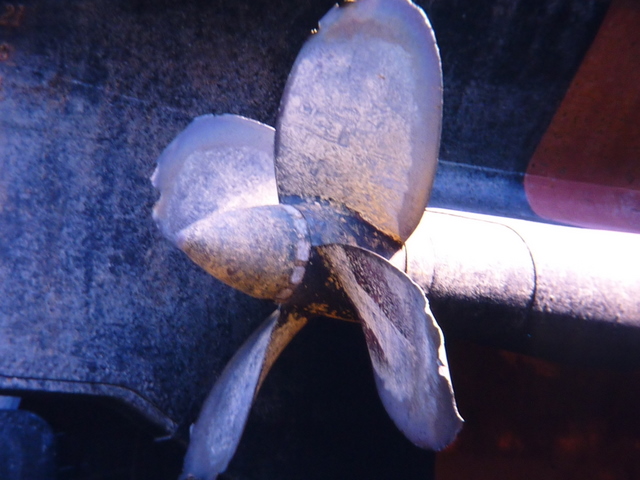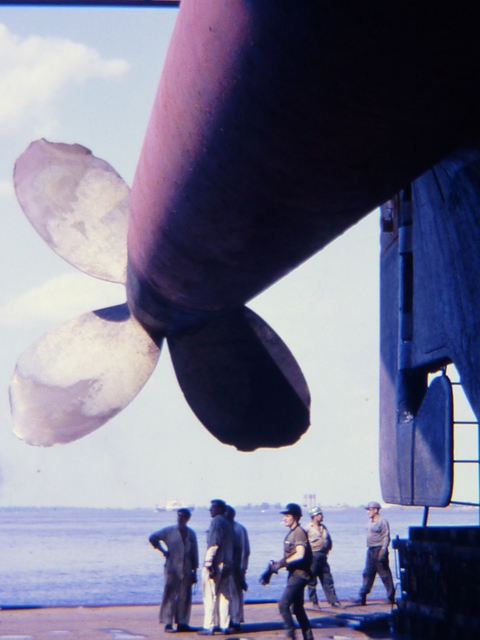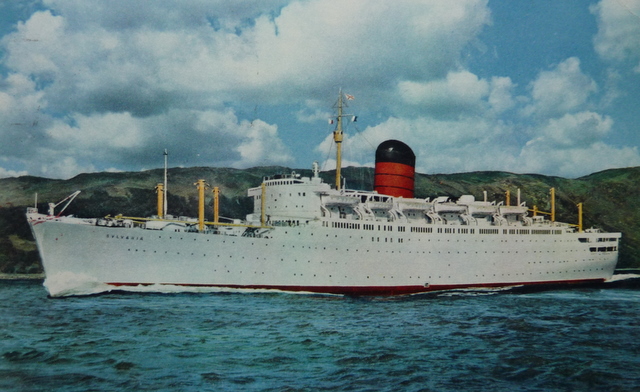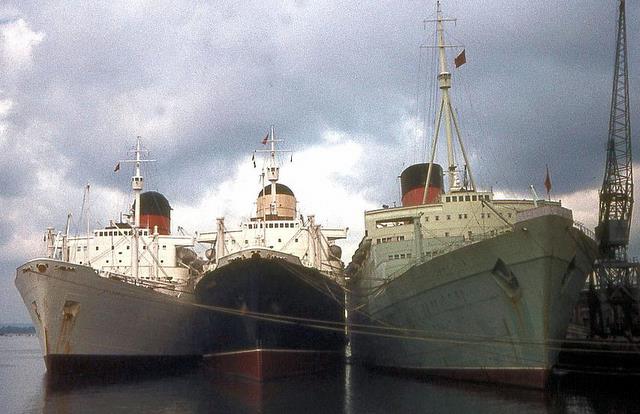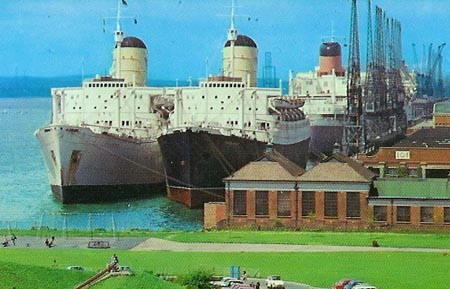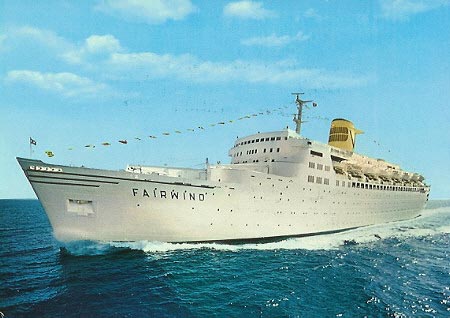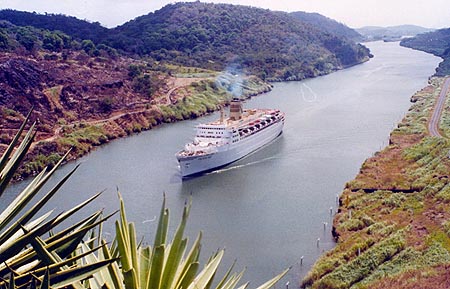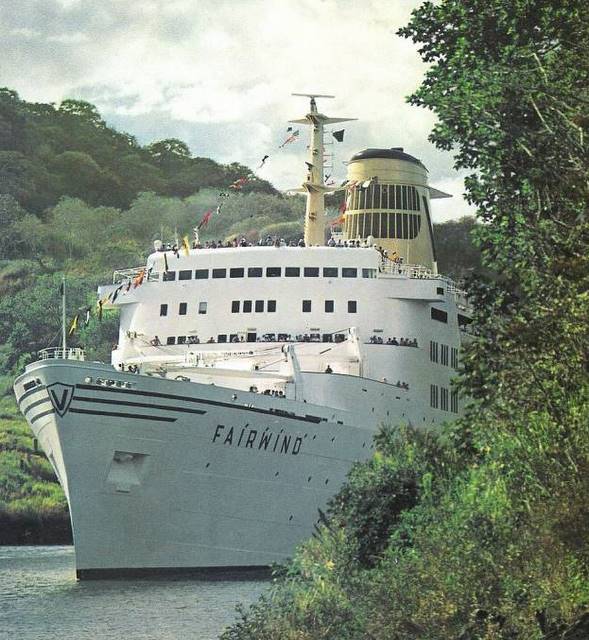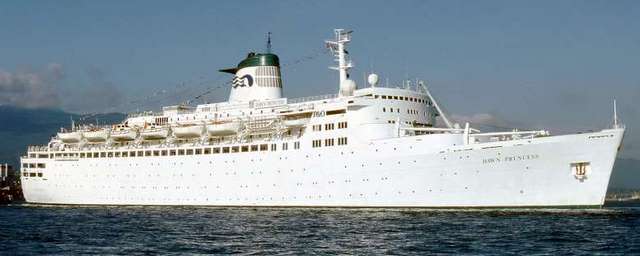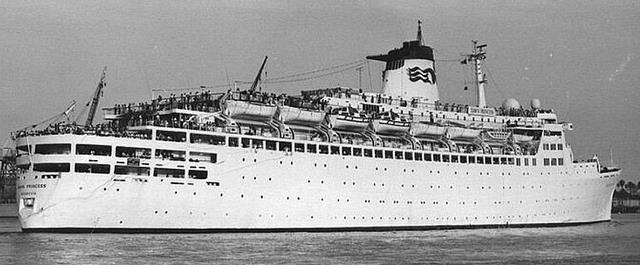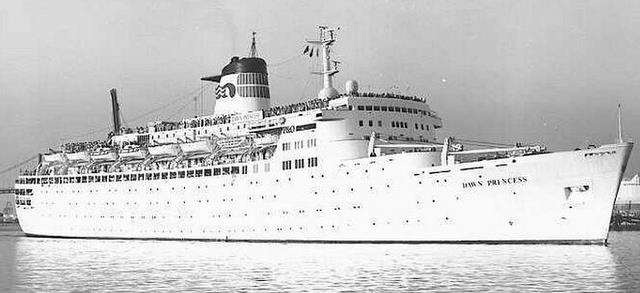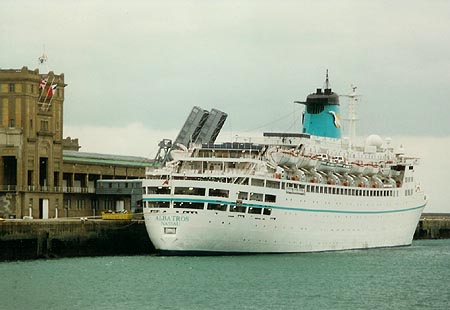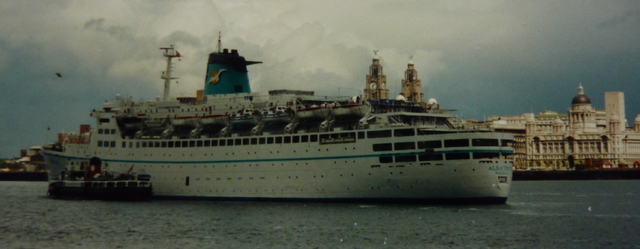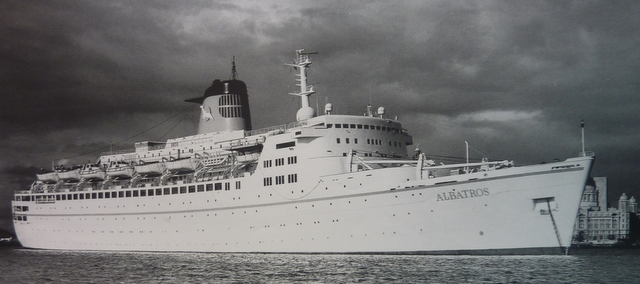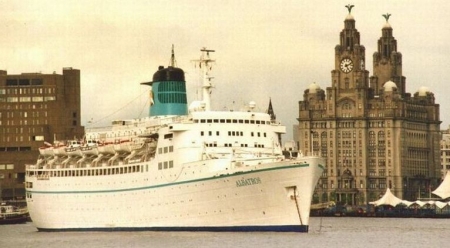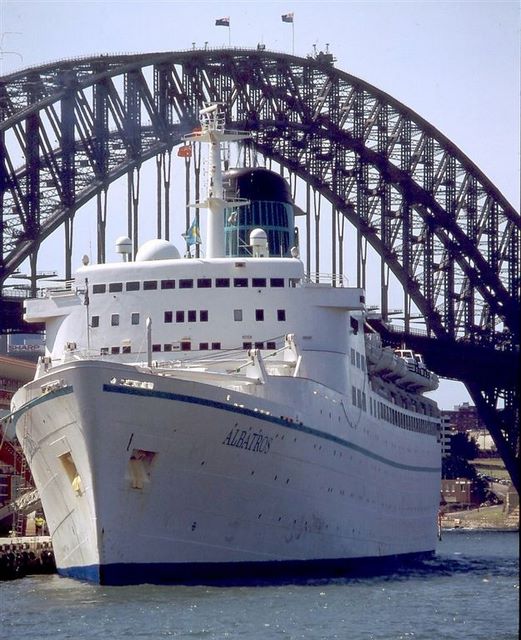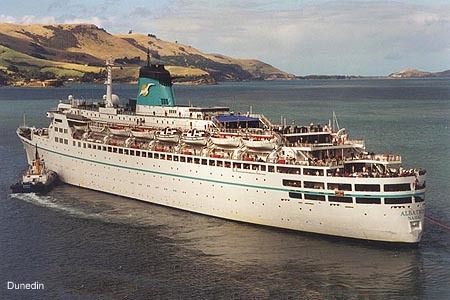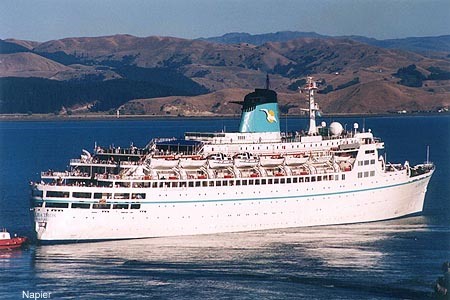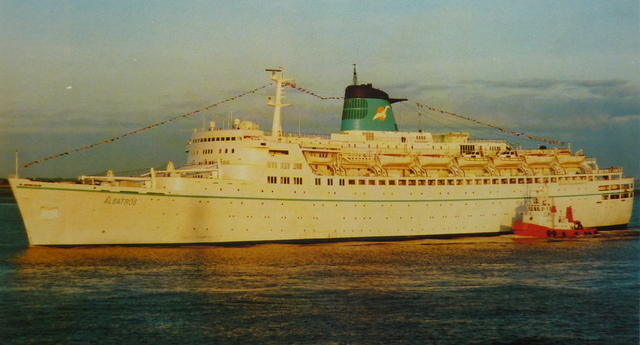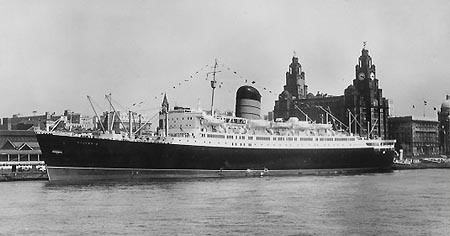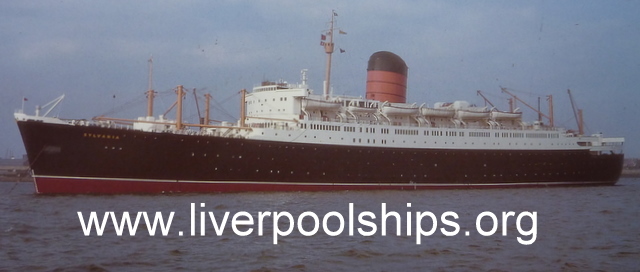LIVERPOOL SHIPS
THE CUNARD LINER 'SYLVANIA' OF 1957
The Cunard liner SYLVANIA was the fourth and final Liverpool-based ship of the SAXONIA class.
In March 1955 the Cunard Line gave John Brown of Clydebank the confirmation of an order for the final ship in what the shipping press was describing as a 'brilliant quartet'. Thiswas to become the SYLVANIA and she was launched by Mrs Norman Robertson, wife of the Canadian High Commissioner in London, on 22nd November 1956. The Cunard directors remained convinced that for another decade at least there would always be sufficient passengers who would wish to travel in a certain degree of luxury and style which would keep the new liners viable.
The SYLVANIA afloat in the waters of the River Clyde immediately after her launch from John Brown's shipyard on 22nd November 1956
The new SYLVANIA in the fitting-out basin in April, 1957
An aerial view of the SYLVANIA in the fitting out basin
~~~~~~~~~~~~~~~~~~~~~~~~~~~~~~~~~~~~~~~~~~~~~~~~~
SYLVANIA: Built by John Brown & Co.Ltd. at Clydebank in 1957. Yard No: 700 Official Number: 187164 Signal Letters: G V T F Gross Tonnage: 21,989 Nett: 11,665 Length: 608.3ft Breadth: 80.4ft Owned by the Cunard Steamship Co.Ltd. Registered at Liverpool 4 steam turbines, double reduction gearing to twin screws
~~~~~~~~~~~~~~~~~~~~~~~~~~~~~~~~~~~~~~~~~~~~ The SYLVANIA leaving the fitting-out basin at John Brown's Shipyard on 26th May 1957, ready for her sea trials over the Arran Mile on the following day.
The new SYLVANIA was ready for her trials over the Arran Mile on 27th May 1957, and two runs were made, at 5.am and 9.30am.
The SYLVANIA running her trials over the Arran Mile
The new ship left Greenock on 5th June 1957 on her maiden voyage to Quebec and Montreal. Industrial troubles at Liverpool had prevented the new liner visiting her home port prior to the maiden voyage.
Mr Frank H. Dawson, director and general manager of the Cunard Line, speaking at a luncheon held on board the SYLVANIA prior to her maiden voyage, commented: "The last fifteen months have probably been the most difficult in my 45 years' service with the Company. In that time, up to March 1957, we have suffered from trials and tribulations, mostly from labour." In spite of this, Mr Dawson spoke mainly of achievement and hope, and said: "We may go on and build other ships in the future because we have a great and abiding affection for our Canadian cousins. Canada has developed and is going to be increasingly important to our daily life. There is an enormous potential there and we, as a Company, have tried to be of service to it. Cunard's total share of the Canadian passenger trade, since 1947, both westbound and eastbound, has totalled 614,000 passengers."
The Cunard Line took the opportunity to announce that following the successful completion of its building programme for the Canadian service, a berth had been reserved at Clydebank for a further passenger liner to replace the ageing BRITANNIC.
The tourist-class lounge, the SYLVANIA's largest public room, with its air of restful comfort, was the natural rendezvous for all ages. Its large dance floor and bay windows are added attractions.
The SYLVANIA's first-class restaurant offered superb cuisine in a delightful atmosphere. It owed its gracious character and simplicity to the famous Clifford's Inn Room at the South Kensington Museum. Fancy !!!
The attractive tourist-class restaurant was a spacious room which spanned the entire width of the hull. Its walls were graced with white and gold patterned mirrors, between each of which was a mural depicting fruit harvesting.
Always a popular meeting place, the first-class Smoking Room and Cocktail Bar took its elegance and warmth of colour from the Service motif of its decorative scheme. Its mullioned windows look to port, starboard and forward.
The SYLVANIA's most splendid room, the First-Class Lounge, was based on the exquisite boudoir of Madame de Serilly. Its magnificent painted ceiling was the work of the Canadian artist, Tom Luzny.
Murals depicting proverbs of leading European countries give the tourist-class Smoking Room an interesting and unusual decorative scheme. From this attractive room, passengers can look to port, starboard and the after part of the ship.
First-Class Staterooms were as remarkable for their spaciousness as for their luxurious comfort. Having an adjoining bath or shower, they were notable too for the variety of unusual woods from which their furniture was constructed.
Of generous area with ample wardrobe and drawer space for each passenger, tourist-class staterooms were decorated in a pleasing range of painted schemes. There were reading lights above each bed, and bathrooms were close at hand.
Please note the above captions were taken from Cunard's advance publicity for the SYLVANIA
The SYLVANIA berthed on the north side of Pier 92, North River, New York. On the south side of the Pier, the funnels of the QUEEN MARY can be seen.
The SYLVANIA operated the Canadian service from Liverpool in company with her sister the CARINTHIA during the summer and Autumn of 1957 until the end of the St Lawrence season. Her maiden arrival at New York was on 17th December 1957 and she then sailed on a Christmas cruise to the West Indies. On 10th January 1958 she resumed trans-Atlantic service, and on the 5th April returned to the Canadian run.
The principal passenger liner piers at New York in the early 1960s. The QUEEN ELIZABETH is approaching her berth on the north side of Pier 90, and beyond her can be seen the two funnels of the MAURETANIA on the south side of Pier 92, whilst on the north side of Pier 92 the SYLVANIA's funnel can be distinguished. In the foreground are the UNITED STATES and the AMERICA, berthed together on the United States Lines' piers, whilst in the near foreground is the American Export Lines' INDEPENDENCE.
In the SYLVANIA's first full year of service (1958), some 1,036,000 passengers crossed the Atlantic by sea. However, this was also the year when the first commercial jet service was introduced between Europe and New York and there was an immediate effect, in 1959, on the number of passengers who chose to cross by sea. For the SYLVANIA and her sisters, built without any real thought toward even occasional use as cruise ships, this was bad news indeed.
Th SYLVANIA outward bound in the Firth of Clyde, following her call at the Tail of the Bank, Greenock. On the right of the painting is the inward-bound EMPRESS OF BRITAIN (from an original painting by Frank Bauwens)
The SYLVANIA served on the Canadian run for only a relatively short time. In November 1960 it was announced that she would replace the BRITANNIC on the Liverpool - New York service. Any thoughts about building a replacement for the BRITANNIC had been abandoned due to the increasingly poor results from Cunard's passenger liners, and the general manager's 'gung-ho' comments on the eve of the SYLVANIA's maiden voyage just three years earlier now sounded rather hollow.
The SYLVANIA replaced the BRITANNIC on the Liverpool to New York service from 1961. She is seen here arriving at Pier 92, New York.
During her annual refit in January 1964, eighty of the SYLVANIA's tourist-class cabins were refitted and equipped with private bathrooms. Whilst this was a welcome move, it was far from enough to make her competitive with other liners then in service. It was a token gesture - after all there were 250 tourist-class cabins.
The SYLVANIA at anchor in Cobh Habour, photographed from the tender BLARNEY
It was becoming clear to the Cunard Line directors that the demand for trans-Atlantic passages during mid-winter was in terminal and rapid decline, and on 10th February 1965 the SYLVANIA made a 27-day cruise from Southampton to the Mediterranean. The following winter saw the SYLVANIA more extensively employed on cruising until 20th April 1966. Hardly had she settled back on the Atlantic than the six-week seamen's strike commenced in mid-May and the SYLVANIA got caught up in the dispute when she docked at Liverpool.
The SYLVANIA alongside at Funchal, Madeira, in January 1966
Abstract of Log for the SYLVANIA's 1966 Mediterranean Cruise
The SYLVANIA's newspaper, the Ocean Times, for Tuesday, 15th February, 1966
A typical dinner menu on the SYLVANIA's 1966 Mediterranean Cruise
Three weeks after the end of the strike, on 22nd July 1966, Cunard's chairman Sir Basil Smallpiece informed the Company's employees, both afloat and ashore, just how serious the financial situation had become. The seamen's strike had cost Cunard £3 million. Sir Basil commented: "This is the bottom of the barrel. There is enough left in the kitty for eighteen months, perhaps a couple of years, but that's it. In the past five years the passenger liners have bled Cunard to the extent of £14 million in total losses."
The SYLVANIA at anchor in the Mersey. On the left is the Mersey Docks & Harbour Board's salvage tender VIGILANT
The Cunard Line closed the Liverpool - New York route at the end of 1966 and the SYLVANIA made the final crossings in November. The Mersey Docks & Harbour Board shed no sentimental tears: it had always been more interested in long-stay cargo ships rather than quick turnaround passenger liners.
The SYLVANIA was given a white hull in 1967 and she is seen here in pristine condition at Funchal, Madeira
The SYLVANIA at anchor off Martinique whilst on a Caribbean Cruise in February 1967
The SYLVANIA had her hull painted white during her 1966/67 overhaul, and on 13th January 1967 she sailed from Southampton on a 36-day cruise to the Caribbean. Only the public rooms had air-conditioning and the passenger cabins had to make do with forced draught and fans. It became intolerably hot at times. On her return from the West Indies, the SYLVANIA was based at Gibraltar for a series of five Mediterranean cruises. The passengers were flown from Gatwick to Gibraltar and the concept of 'fly/cruise' holidays was introduced.
Gibraltar Bay photographed from the top of the Rock with the SYLVANIA alongside the breakwater.
During these cruises the SYLVANIA carried a SRN-6 hovercraft on her foredeck. The British Hovercraft Corporation was trying to interest the governments of various countries bordering the Mediterranean in purchasing hovercraft, and to give government officials a practical demonstration of the hovercraft's capabilities it was put into the water, using the ship's gear, at various ports and sent on demonstration runs. The hovercraft was not there to provide sight-seeing trips for cruise passengers, although occasional short trips for passengers were made 'around the bay' between the official runs. Lowering and recovering the hovercraft was a time consuming business for the deck crew involving considerable overtime, but fortunately British Hovercraft was picking up the tab for this.
The hovercraft was stowed at the after end of the SYLVANIA's foredeck.
The SRN-6 hovercraft being lowered into the water from the SYLVANIA
After completing her cruise programme the SYLVANIA returned to the Canadian service, alternating between Liverpool and Southampton as her terminal port in the UK. It was 'EXPO 67' (the World Fair) at Montreal, and Cunard hoped to attract passengers who wished to visit the Fair. After leaving Montreal on 15th June 1967, the SYLVANIA ran aground just below Trois Rivieres, and all efforts to refloat her failed. She had on board almost a full complement of passengers, and two days later they were taken off by tender and offered an air passage or a berth on the next Canadian Pacific sailing.
(Photo : Mike Howden)
The SYLVANIA was in Canadian Vickers' floating dock at Montreal between 26th and 30th June 1967 whilst damage to her propellers was made good.
The SYLVANIA stubbornly refused to be refloated and it was only when her bunkers and fresh water ballast had been pumped out, and the crew sent away in the lifeboats, that she reluctantly came off the St Lawrence mud. She was towed back to Montreal and entered Canadian Vickers' floating dock on 26th June, and remained there for three days whilst damage to her propellers was made good. Her entire crew was living aboard during this time, which was extremely trying for all concerned as the ship was virtually shut down with no forced draught in the heat and humidity of a Canadian summer. After leaving the floating dock, the SYLVANIA returned to Montreal until her next scheduled eastbound sailing on 4th July.
Damage to the SYLVANIA's starboard propeller after the grounding.
In October 1967 the Cunard chairman Sir Basil Smallpiece announced that the SYLVANIA would be withdrawn from service, along with the CARINTHIA and the CARONIA. In a masterstroke of public relations, Sir Basil said that the SYLVANIA was unsuitable for crusing, and then wondered why the passenger numbers were so low on the extensive cruising programme which lasted until 7th May 1968.
The SYLVANIA sailed from New York on 11th December 1967 for Southampton with 462 passengers, the only Cunard liner to make a North Atlantic Christmas crossing. She called at Halifax, Nova Scotia, for seventy-seven more passengers.
The SYLVANIA in the Firth of Clyde with her 1967 white hull.
The SYLVANIA completed her Cunard service almost eleven years to the day after she had left Greenock on her maiden voyage on 5th June 1957. She was laid up at Berth 101, Southampton, alongside her sister the CARINTHIA. They were redundant and outmoded, yet, ironically, their most successful years were still to come.
The CARINTHIA and the SYLVANIA were both quickly sold to the Societa Italiana Trasporti Marittimi SpA (the Sitmar Line) at a price of £1 million each. Sitmar intended operating the two ships on the Australian immigrant service, but then lost the contract with the Australian government. As a result, the two ex-Cunarders remained laid up for almost two years. The SYLVANIA's name was changed initially to FAIRLAND, and then to FAIRWIND.
The end of an era: from left to right - the SYLVANIA, the CARINTHIA and the CARONIA laid up together at berth 101, Southampton, in May 1968
The SYLVANIA (with white hull on the left) and the CARINTHIA were laid up at Berth 101 Southampton for almost two years from 1968 to 1970 , following their sale to the Sitmar Line
On 6th January, 1970 the FAIRWIND left Southampton under tow and arrived at Trieste on 18th January. The ship was completely rebuilt and on completion was totally unrecognisable as the former SYLVANIA. Every one of her passenger cabins had been redesigned and all of them had private bathrooms. It was not until 14th June 1972 that the work was complete and the FAIRWIND sailed on a positioning voyage to Los Angeles. Sitmar advertised the FAIRWIND as 'the most luxurious cruise ship ever seen in most parts of the world'. The FAIRWIND's usual route involved transits of the Panama Canal on voyages from San Juan to Acapulco, and from Los Angeles to Mexico.
Sitmar Cruises FAIRWIND is hardly recognisable as the former SYLVANIA
The reputation of Sitmar Cruises continued to grow. The FAIRWIND with her sturdy North Atlantic hull and strong bows, built to withstand any seas, ensured her passengers a far more comfortable voyage than any new purpose-built cruise ship could offer.
The FAIRWIND (ex SYLVANIA) in the Panama Canal
The transit of the Panama Canal
After twelve years of successful cruising the FAIRWIND was completely refurbished in 1984. In 1988 she made two cruises up the Amazon as far as Manaus. Later in the year one of her propeller shafts fractured and she had to be towed to a San Francisco shipyard for repairs. When she reappeared it was with the extended name SITMAR FAIRWIND. As if to show disapproval for this new name, the ship broke down again a few weeks later off Nassau and had to be towed to New York for lengthy repairs.
On 28th July 1988, P&O acquired the entire share capital of Sitmar Cruises. The price paid was $210 million. This meant that the FAIRWIND returned to British ownership. She was given a new name, the DAWN PRINCESS. Her first cruises for P&O took her from New York to Halifax, Quebec and Montreal. It was indeed ironic that she should return to the old familiar waters of her Cunard days.
Resplendent in her P&O Cruises' livery, the DAWN PRINCESS (ex FAIRWIND, ex SYLVANIA) in 1989
The SYLVANIA sailed for P&O Cruises as the DAWN PRINCESS for four years from 1988 until 1992
During a drydocking in Portland, Oregon, in 1991, asbestos was discovered in the DAWN PRINCESS with the result that the vessel was out of service for three months whilst it was removed. In 1992, P&O Cruises stated that the DAWN PRINCESS (ex SYLVANIA) 'no longer fits into the Company's modern fleet', and in 1993 she was withdrawn from service. She was purchased by Happy Days Shipping and on 18th August 1993 she was renamed ALBATROS, on charter to the German tour operator Phoenix Reisen.
The ALBATROS (ex SYLVANIA) alongside at Cherbourg with the familiar features of the Gare Maritime and the extending gangways
An ambitious programme was planned for the ALBATROS which included an annual 100-day world cruise. On 30th May 1995, when the vessel was sixty miles off Yanbu in the Red Sea, a flash fire broke out in the engine room. The blaze was quickly extinguished, but the boilers were shut down as a precaution. The ALBATROS eventually reached Jeddah where her passengers were landed and flown home on chartered flights. The ageing liner was towed to Marseille for repairs which took until 26th July 1995.
As the ALBATROS, the SYLVANIA returned to her original home port of Liverpool on 13th May 1997.
The ALBATROS (ex SYLVANIA) at anchor off the Pier Head at Liverpool on 13th May 1997
A couple of years later the ALBATROS sailed from Bremerhaven on a two-week cruise around the British Isles. She called at Liverpool on 13th May 1997 and three days later was at anchor off St Mary's in the Scilly Isles. Shortly after sailing, the ALBATROS struck the well-charted North Bartholomew Rock in St Mary's Sound. Her 504 passengers remained on board until a chartered ferry took them to Penzance a day later.
The ALBATROS (ex SYLVANIA) at Sydney
The ALBATROS sailed to Southampton under her own steam on 25th May and was dry docked. It had been the most serious incident of her long life. What saved her from becoming a total loss was the extra strength built into the ship to help withstand the ice of the St Lawrence on her designed route during her Cunard days.
The ALBATROS's ambitious world cruises took her to parts of the world some 10,000 miles from her designed Cunard route. Above, the old SYLVANIA is seen at Dunedin, and below at Napier.
The ALBATROS returned to service with Phoenix Reisen and completed another six years of ambitious cruises, which included an amazing 130-day world cruise in 2001. The end came in November 2003 when the 46-year-old former SYLVANIA was taken out of service allegedly due to technical problems, and a planned world cruise was cancelled.
The old ship was laid up at Genoa for several weeks, but then sailed to Alang where she arrived on 19th January 2004 to meet her end at the hands of shipbreakers. Demolition was complete just as she reached the 47th anniversary of the her maiden voyage. By any standards, the former Cunard liner SYLVANIA had had an amazing career ! <<<<<>>>>>
The SYLVANIA, looking at her very best in her traditional Cunard colours, alongside the Princes Landing Stage at Liverpool at the start of another voyage to Quebec and Montreal, via Greenock.
________________________________________________________________
______________________________________________________
|

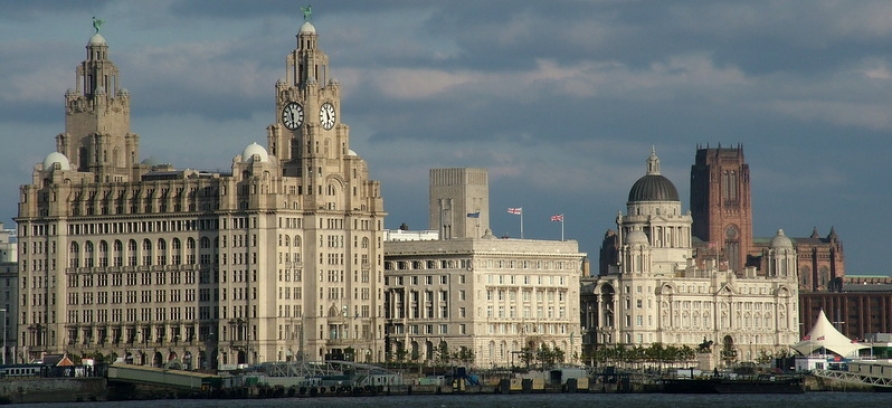
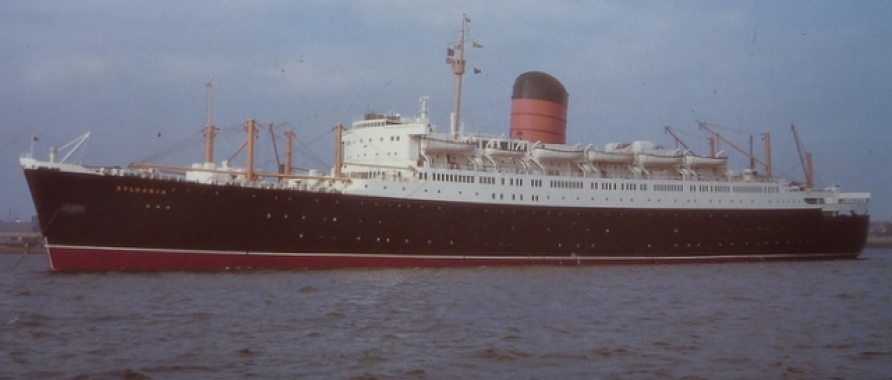
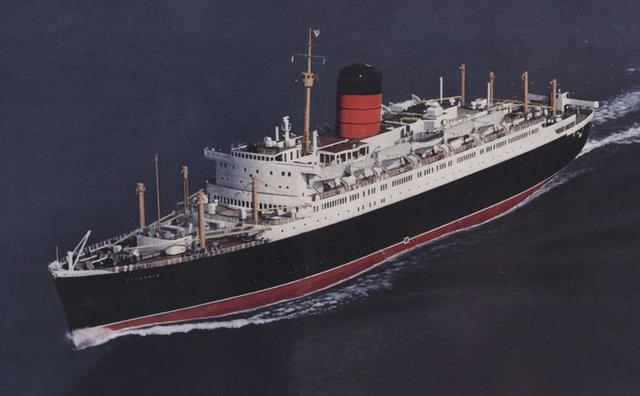
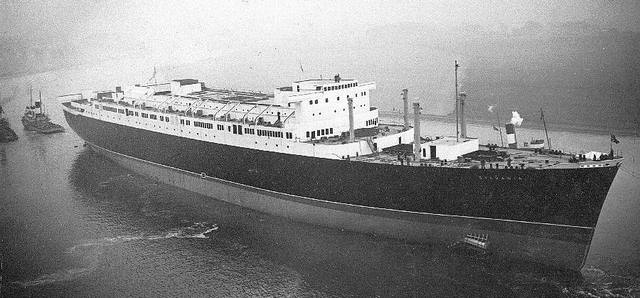
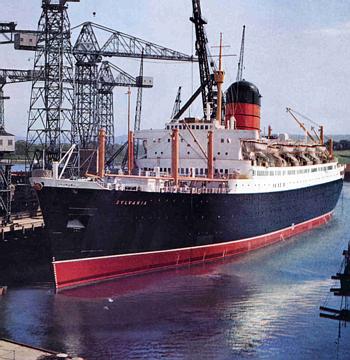
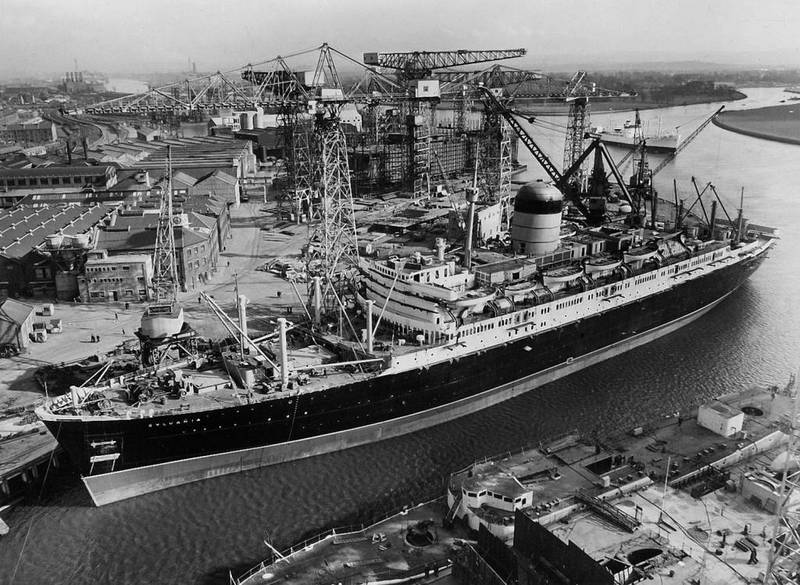
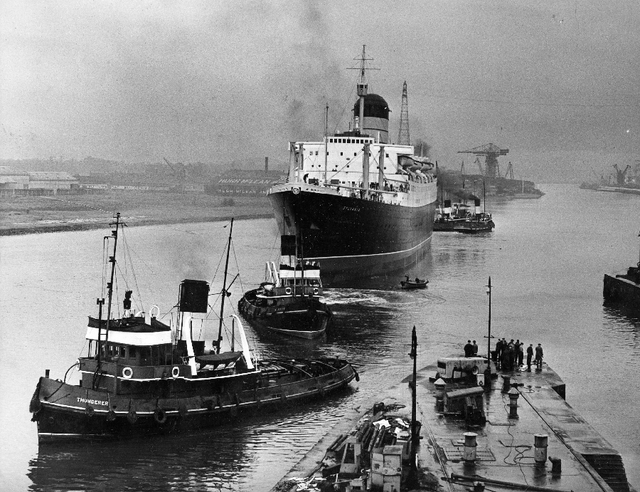

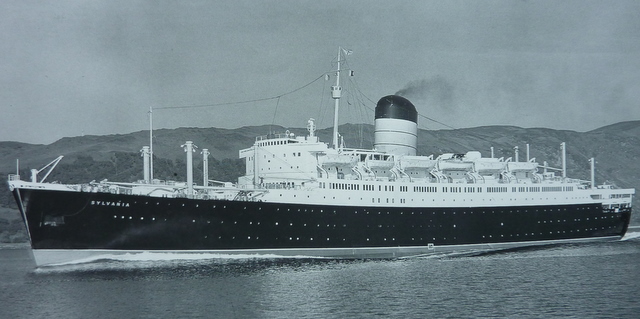
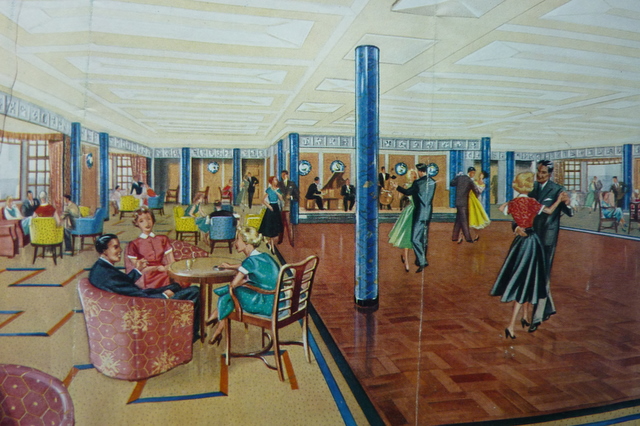
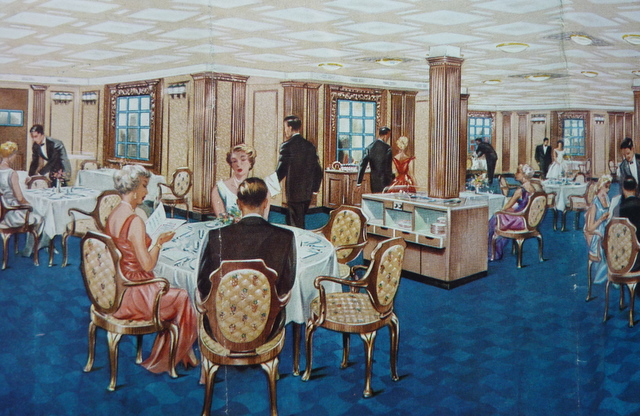
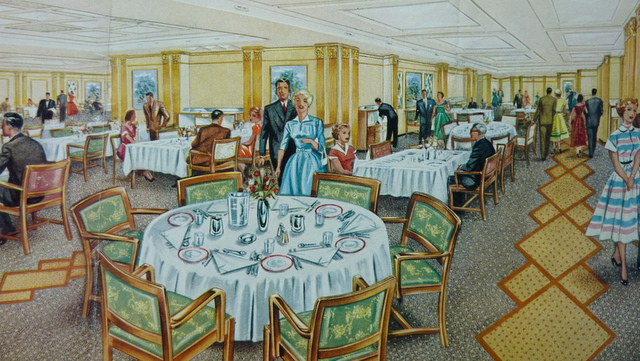
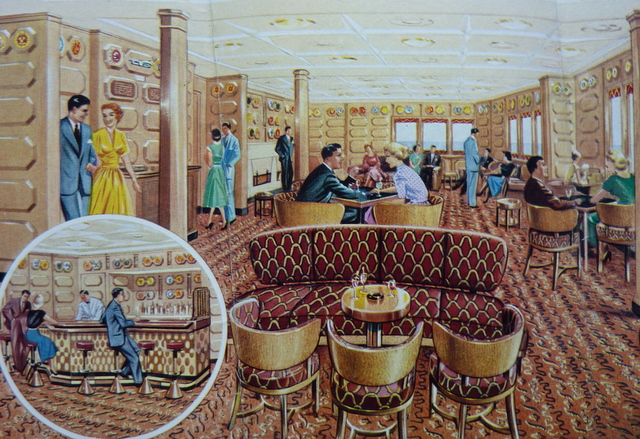
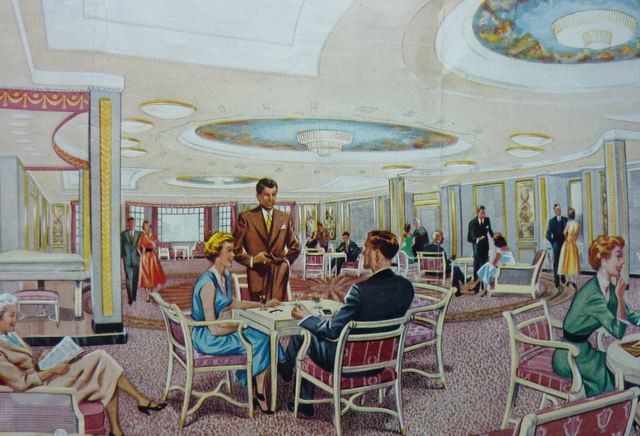
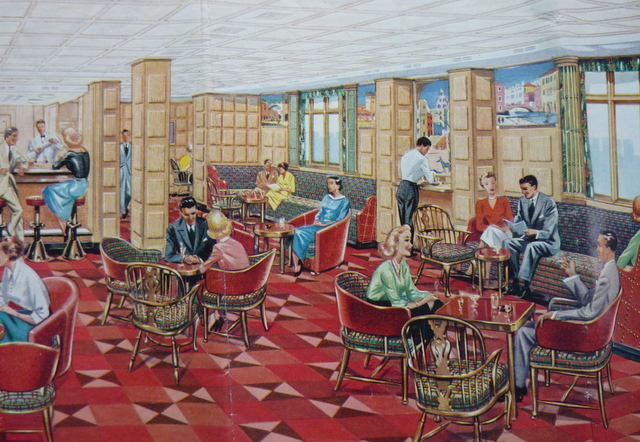
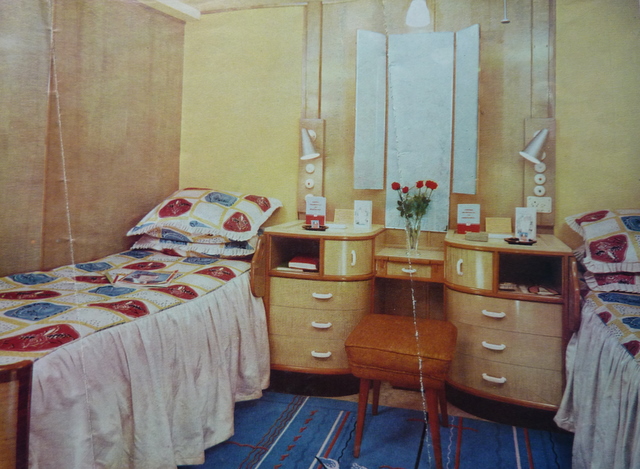
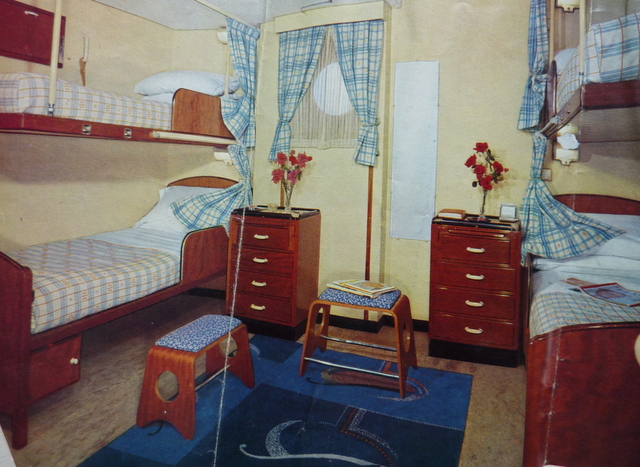
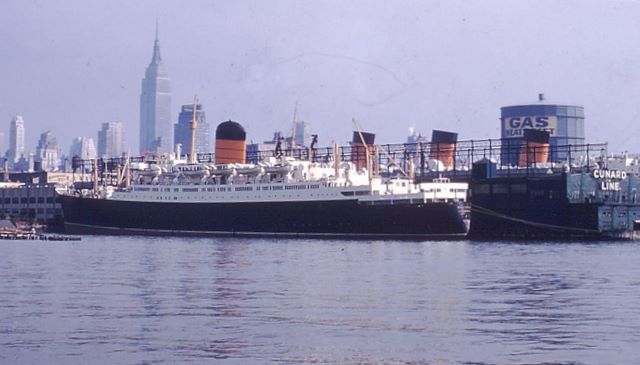
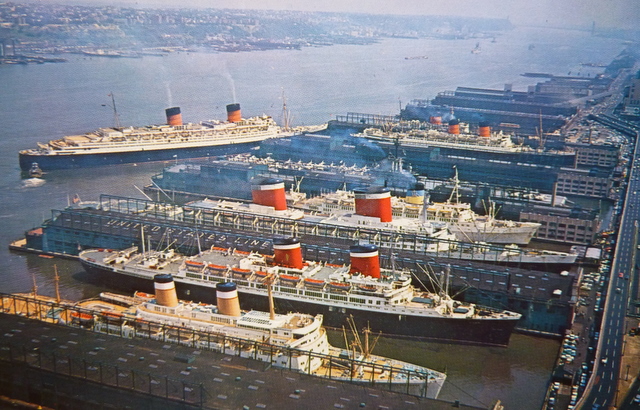
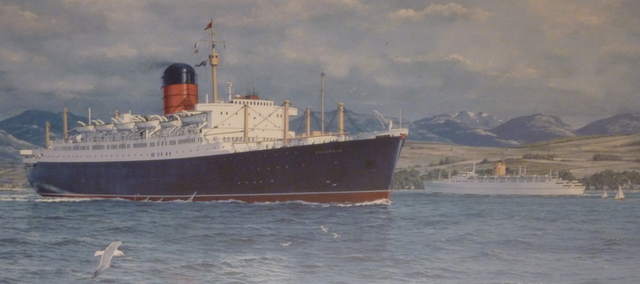
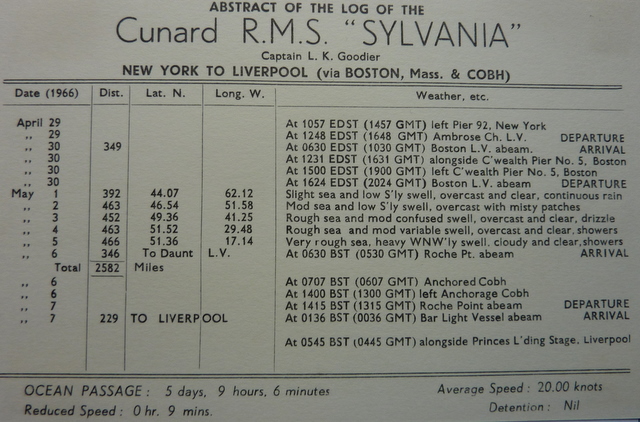
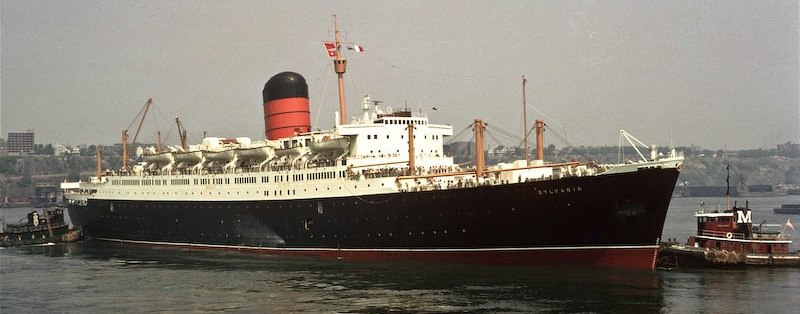
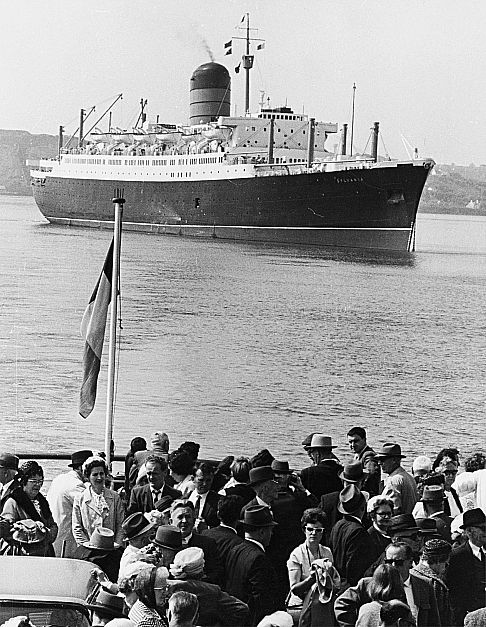
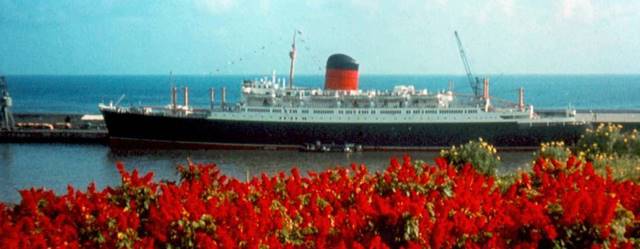
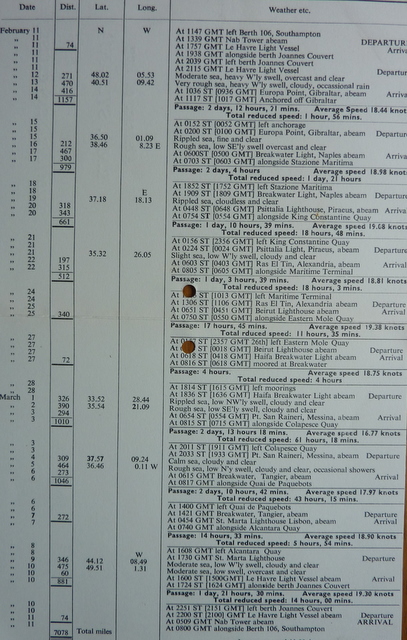
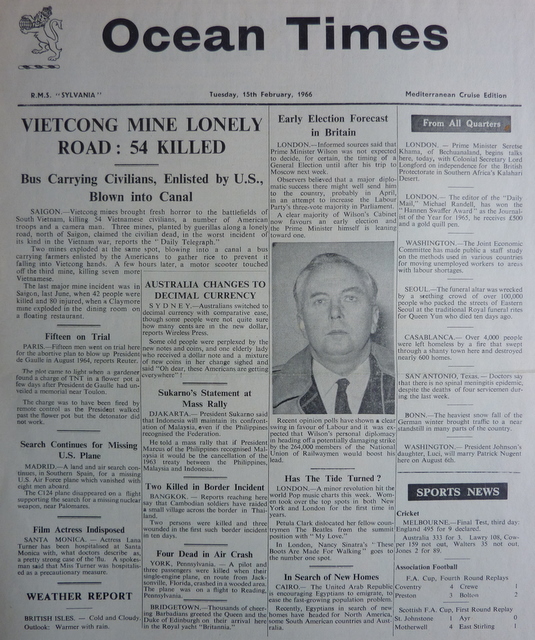
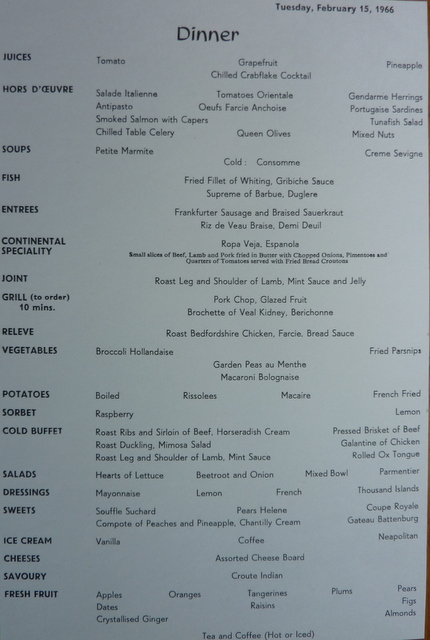
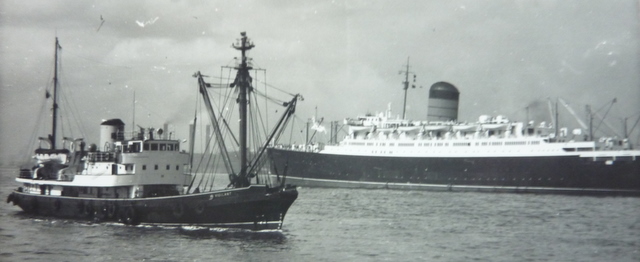
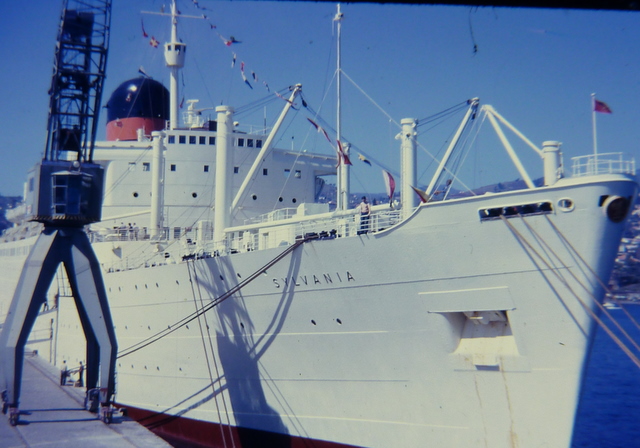
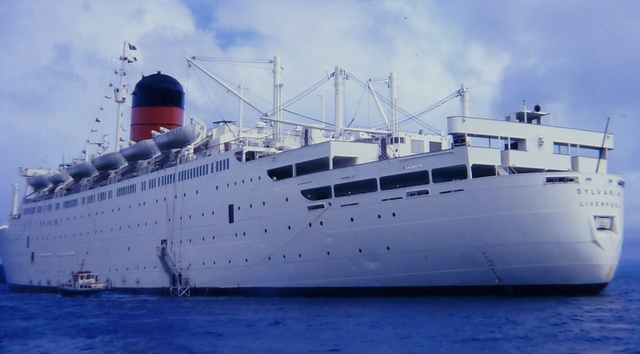
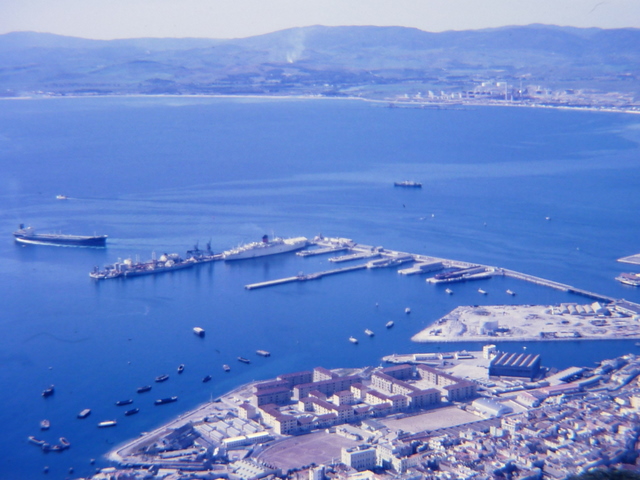
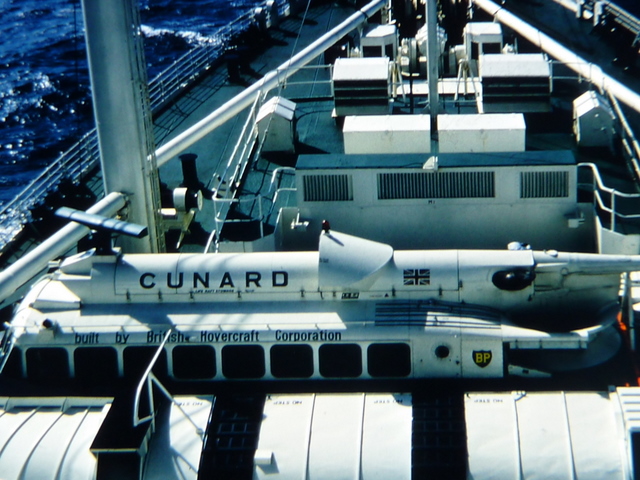
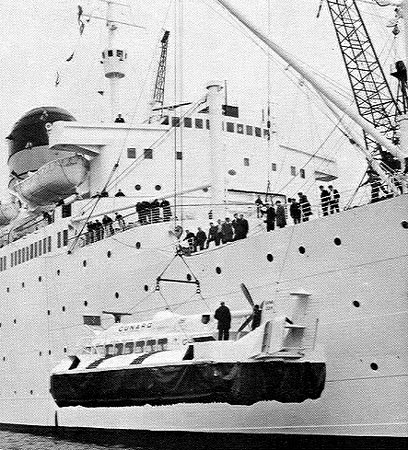
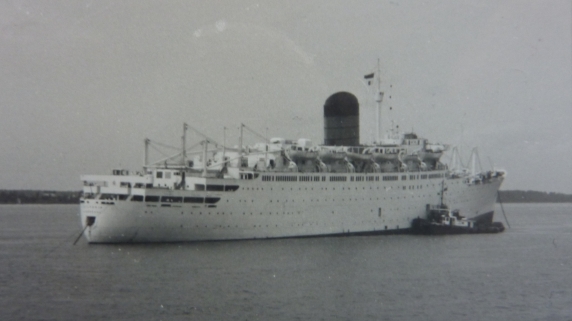 The SYLVANIA aground at Trois Rivieres on 17th June 1967
The SYLVANIA aground at Trois Rivieres on 17th June 1967